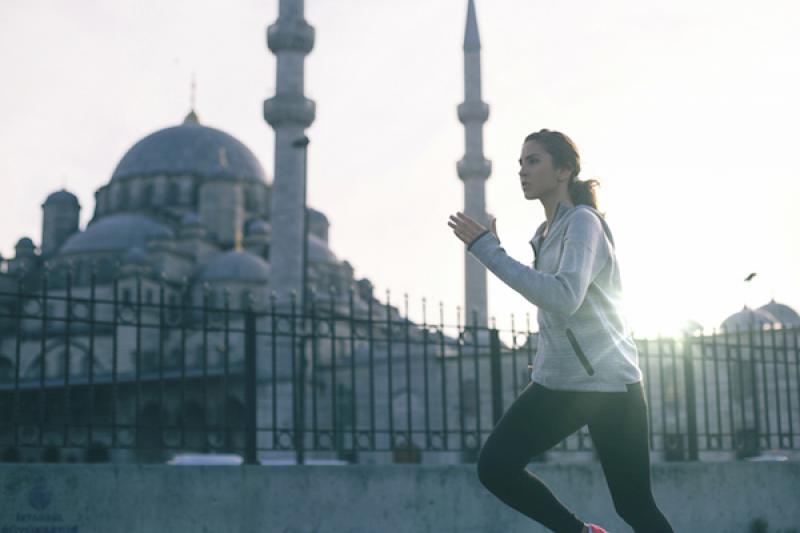
Fun Runs - How to Stay Injury Free
Running better, faster and longer is about prevention and staying injury free
There are many things runners can do to help stay injury free
Training Load
A large proportion of running overuse injuries are caused by simply doing too much, too soon. Consider your base level of fitness before starting any training program. Running is a wonderful sport for the body but it comes with a high injury risk if you are doing it sporadically. Once you are gradually building up the weekly distance, give yourself a recovery week once a month, typically reducing the training load to about 60% of your previous week, further giving your body a chance to absorb the training. The healthiest and usually the fastest runners are those who are consistent with their training, year-round, allowing for natural and gradual increases and decreases in their load .
Strength Specific Work
Every time you take a step when running, you are literally doing a single-leg squat with up to 4-6 times your body weight going through the chain from your foot up through your knee, hip, pelvis and spine. Think about that. If you are more than 5kg above your ideal body weight, be respectful of the extra load on your body as you increase your training load. Many recreational runners we see cannot do a single leg controlled squat, yet alone 4X their body weight. We recommend that all runners do a minimum of 2-3 strength sessions a week, but it must be run-specific ie lots of core, glutes, single leg squat work and lower limb strengthening as well as the all-important balance and flexibility work. It will be the best injury prevention investment you can make. Our Physios can help design a programme that addresses your weaknesses.
Running Technique
If your core and general strength is good, your balance and flexibility are adequate, and you are not excessively overweight, you will have a much easier time achieving optimal running technique. Everyone is different but there are certain key factors that need to be considered to ensure that you are running safely, for both injury management and to increase your speed and efficiency These include a high knee lift to utilise the powerful glutes; mid or forefoot strike to optimise the calf muscles as a spring; a leg turnover of about 180 strides per minute (count how many times per minute your right foot hits the ground, then double it); a nice upright torso with a very slight forward torso lean etc.
If you feel like you aren’t running at your best or you continually get overuse injuries such as shin pain and plantar fasciitis, having a qualified professional coach assess your running technique could be a worthwhile thought. In conjunction with flexibility and strength assessment, we can do a video analysis on our treadmill to help minimise your injury incidence. Ask one of our experienced runners to help keep you running.
Shoes
This can be a controversial area, you need to listen to your body. If you feel like it is hard to run fast, that your shoes are working against you, or that you get a lot of niggles in your current shoes, consider trying something different. But remember change needs to be a gradual thing with adequate time to adapt to a different shoe. Try running most of the run in the old type and add only a short distance in the new. Gradually adding more time in the new show and less in the old. We advise people to have two pairs of runners on the go and to rotate them throughout the week. Most recreational runners doing 40-80km/week will need to change their shoes over every 3-4 months, depending on their weight and the surfaces they train on.
Training Surfaces
Try to vary your terrain as much as possible – this is good for load but also a great way of incorporating some strength work and balance (eg. soft surfaces like trail running) into your running. Cement is the highest load for your body to cope with so try to do less than half of your training on it as a general rule.
Access our PHYSIO's GUIDE on dealing with 9 of the most common Sporting Injuries
Outside factors
Training is not separate from the rest of our lives. If you are tired from lack of sleep, stressed from work or family, or under-fuelled from working through lunch – these things will all impact on your running form and also increase your injury risk. You need to consider how your body feels going into any run – and adjust accordingly.
Most importantly your body needs time to adapt to change, it just needs time to do so. This will allow your body to make all those valuable training adaptations, enabling more oxygen to reach your muscles when it counts most.
If change is too rapid for your body, overuse injuries, sprains and strains will occur. Not only to the joints but the soft tissues as well. Look at some of our other great blogs on managing some of the common problems we see in runners.
To help with managing and understanding some of the most common sporting injuries we have a free E-book exclusively for our website friends on common sporting injuries. Available at http://commonsportsinjuries.gr8.com Check it out...
Don’t let those niggles develop into a more serious problem. Seek advice and treatment from one of our experienced physios to minimize the pain and disruption to your programme. Injury prevention and early action is essential if you are to reach your goals.
Please visit our contact page to request a booking if you need help to keep you running.
See a PhysiotherapistBlog Archive
Contact Us
Hindmarsh Physiotherapy & Sports Injury Clinic
281 Port Road
HINDMARSH SA 5007
Appointments
